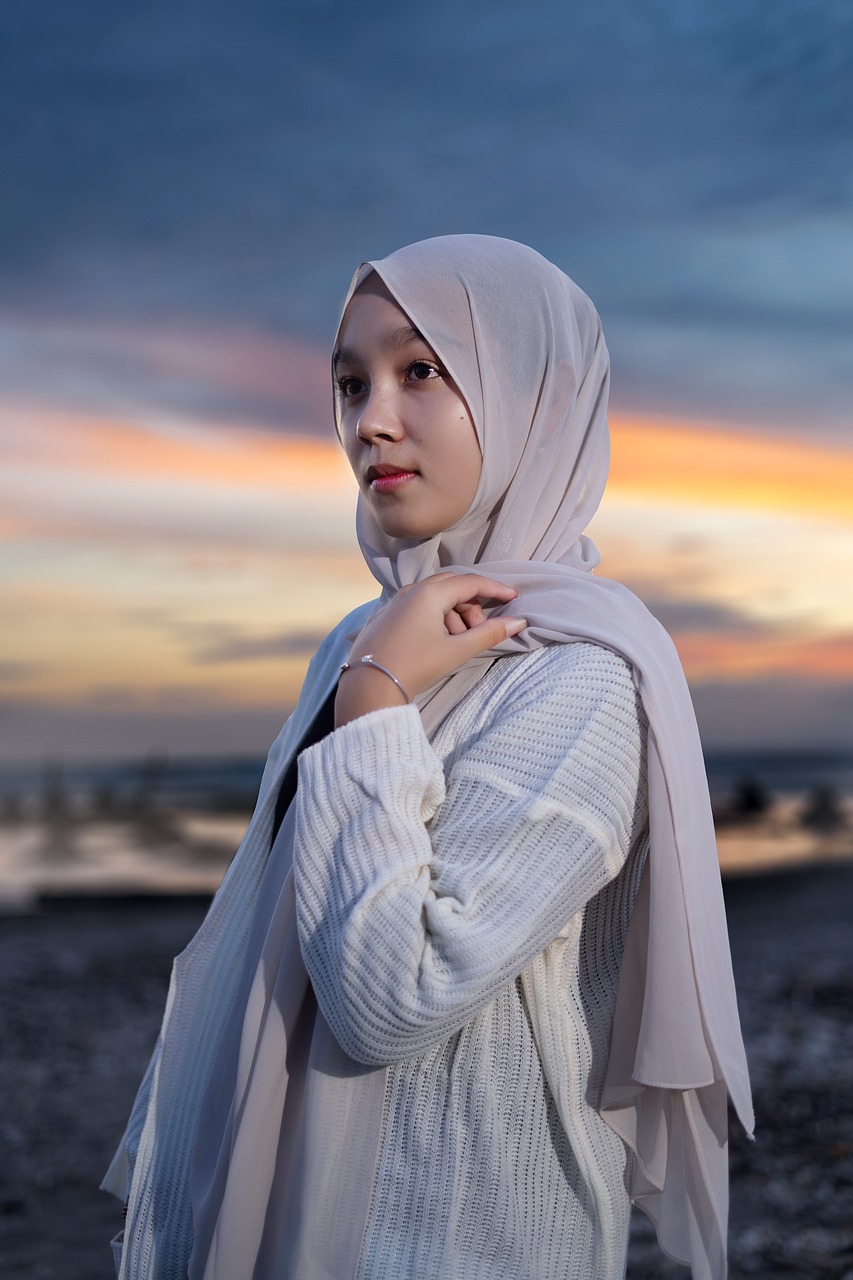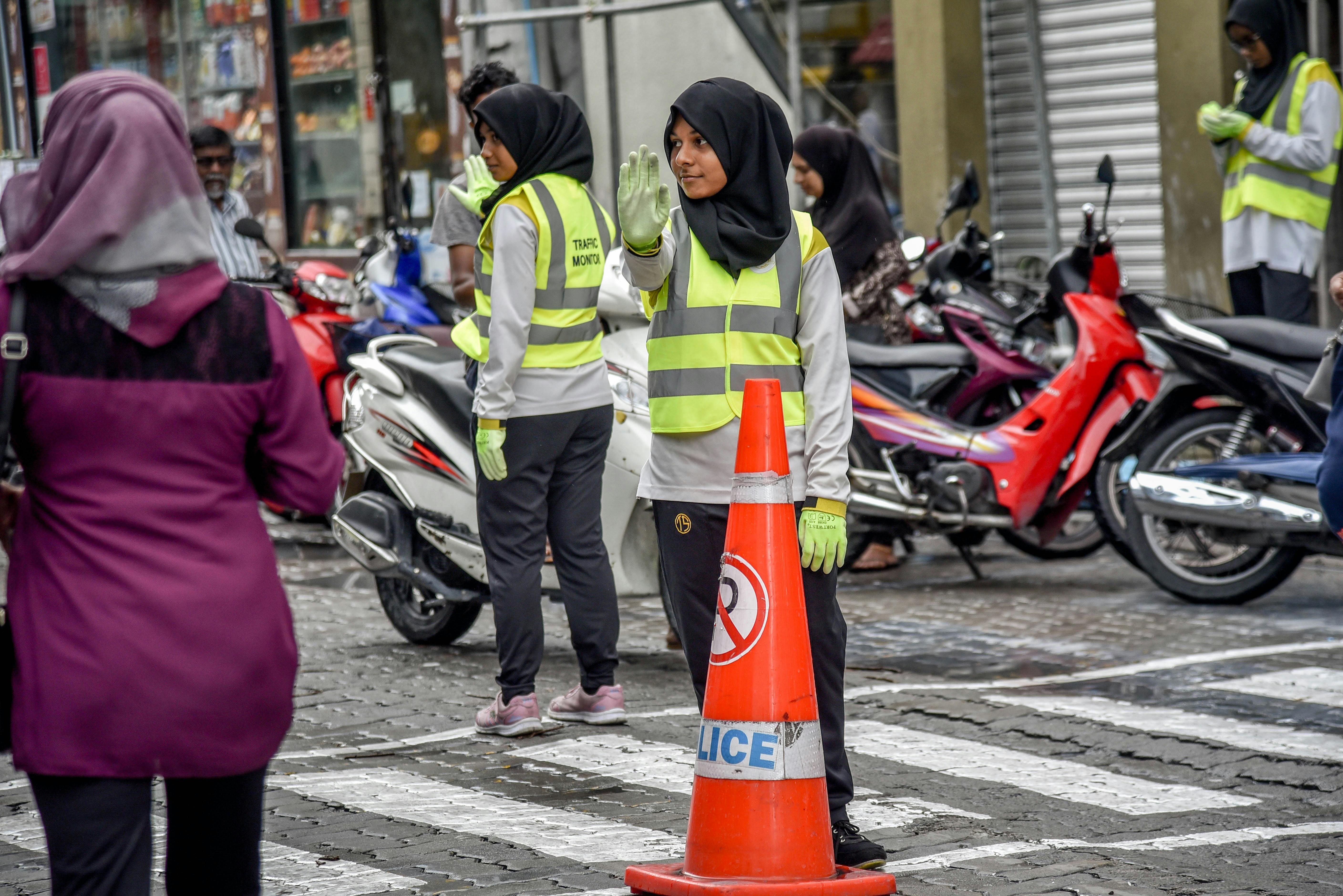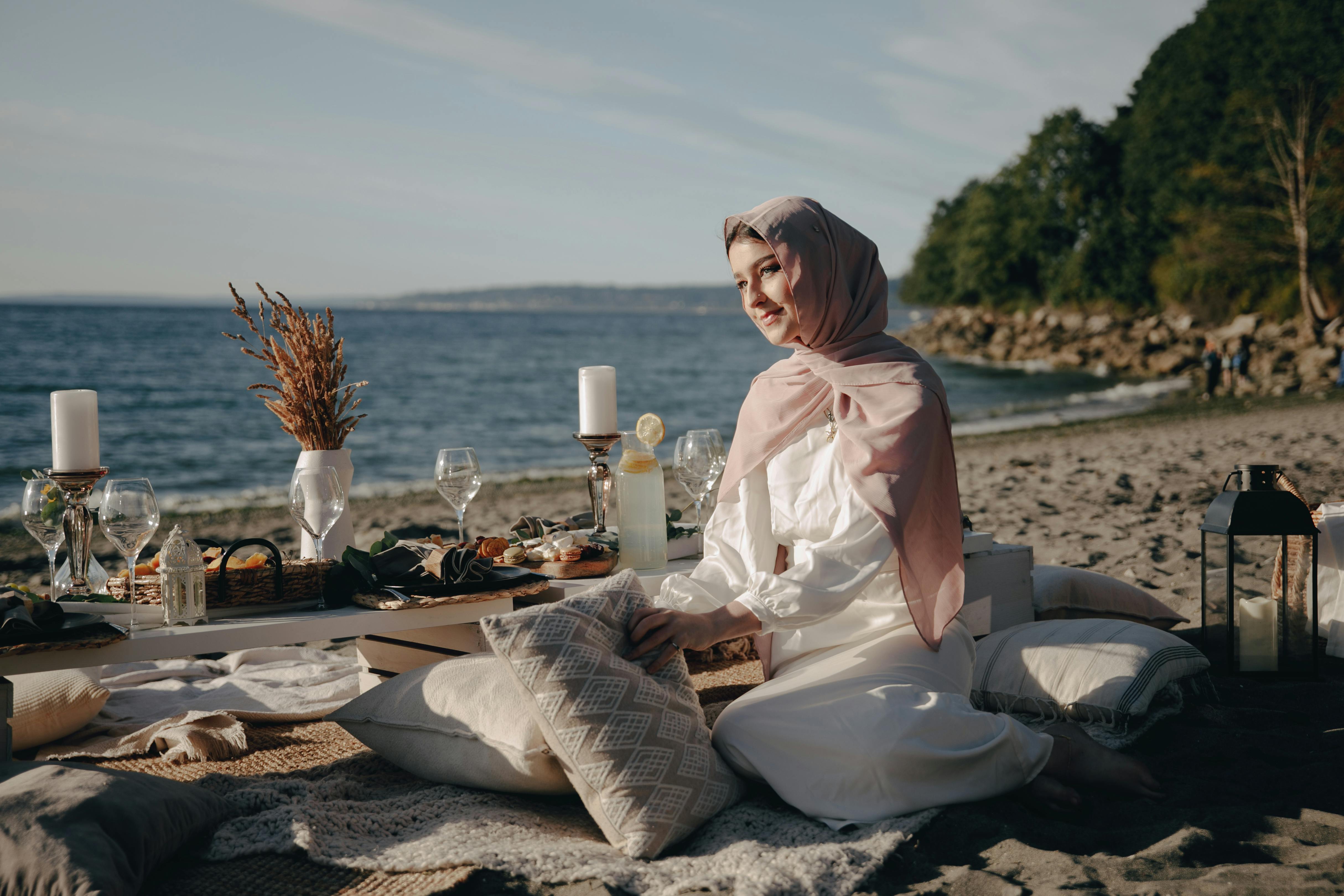What Age Can A Woman Stop Wearing Hijab

The hijab is a religious symbol of modesty and respect for many Muslim women, often worn from puberty when they reach physical maturity. While some women choose to wear the hijab into adulthood, there is no set age at which a woman must stop wearing it. Some Muslim women continue to wear the hijab as a sign of their faith and religious observance, while others may choose to remove it or replace it with a different form of dress. Ultimately, the decision of whether or not to wear hijab is a personal choice that should be respected.The age limit for wearing a hijab for women is based on individual or cultural preference. In some cultures, girls may start wearing a hijab as early as five or six years old, while in others, girls may start wearing it when they reach puberty.
Is There a Specified Age to Stop Wearing Hijab?
The question of when to stop wearing hijab is a personal one, and the answer varies from person to person. Islamically, there is no set age at which a woman must stop wearing hijab. The decision should be based on the individual’s level of maturity and understanding of Islamic teachings.
In some cultures, it is traditional for young women to begin wearing hijab upon reaching adulthood. This could be considered as a sign of respect for one’s parents or as part of the cultural norms in that society. It may also be seen as an indication of maturity and readiness to take on more responsibilities in life.
For those who choose to start wearing hijab at an early age, it can be difficult to make the decision to stop wearing it later in life. The important thing to remember is that each individual should make their own decision based on their own level of faith and understanding of Islamic teachings. If someone decides that they no longer want to wear hijab, they should do so with respect for those who continue to wear it.
The bottom line is that there is no set age at which one must stop wearing hijab. Each individual must decide for themselves when the time is right, based on their own level of faith and understanding of Islamic teachings. There may be cultural reasons why some choose to don or remove the hijab at certain ages, but ultimately it is a personal choice that everyone should make for themselves.
Age Limit for Wearing Hijab
Islamic scholars have widely differing opinions on the age at which a woman should start wearing a hijab. Generally, opinions range from puberty to the age of fifteen. Some Islamic scholars believe that the hijab should be worn from the onset of puberty, while others believe that it should not be worn until the age of fifteen.
The primary reason for this difference in opinion is due to cultural differences and interpretations of Islamic law. In some Muslim cultures, girls are expected to begin wearing a hijab once they reach puberty, while in other cultures, girls may not begin wearing a hijab until they are much older.
Another factor that plays into this debate is whether or not there is an age limit for when a woman should start wearing a hijab. Many Islamic scholars believe that there is no set age limit for when a woman should start wearing a hijab and instead rely on each individual’s own judgment when it comes to deciding when to begin wearing a hijab.
Finally, some Islamic scholars argue that women should begin wearing a hijab as soon as they reach maturity, regardless of their age, in order to protect their modesty and dignity. This opinion is based on the belief that it is important for women to dress modestly in order to maintain their honor and respect within society.
Ultimately, the decision about when to start wearing the hijab depends on each individual’s personal beliefs and circumstances. There is no one-size-fits-all answer when it comes to deciding when a woman should start wearing a hijab; however, all Islamic scholars agree that modesty and respect are two important qualities that any Muslim woman must strive for regardless of her age or culture.
Different Opinions of Islamic Scholars on the Age Limit of Wearing Hijab
The debate surrounding the age limit of hijab-wearing has been a long-standing one amongst Islamic scholars. Some scholars have argued that the wearing of hijab should start from puberty while others have argued that it can be observed earlier.
For example, some scholars have suggested that girls should begin to observe hijab at the age of seven. This opinion is based on a hadith (narration) from Prophet Muhammad (peace be upon him) which states that girls should begin to observe hijab at the age of seven. They argue that this is an age where children begin to understand the importance of modesty and respect, and thus, it is appropriate for them to start observing hijab at this age.
On the other hand, some scholars have argued that girls should not observe hijab until they reach puberty. This opinion is based on another hadith which states that girls should not observe hijab until they reach maturity and understand its importance. They argue that it is inappropriate for young children to observe such rules when they are still too young to understand their implications.
Ultimately, there is no consensus among Islamic scholars regarding the exact age when girls should start observing hijab. While some suggest it should be done as early as seven years old, others argue it should only be done when a girl reaches puberty and can properly understand its implications.
Reasons Behind Setting an Age Limit for Wearing Hijab
The age limit for wearing hijab is set by Islamic scholars as a form of protection and as a way to ensure that young girls are not exposed to the world too soon. Wearing a hijab can be seen as a sign of religious maturity, and it is believed that young girls need to be mentally and physically ready before they can take on this responsibility.
In some Islamic countries, the age limit for wearing hijab is set at 9 or 10 years old, although in some communities this may vary depending on the individual child’s maturity level. This is to ensure that young children don’t feel overwhelmed or pressured into wearing the hijab before they are ready. It also helps to protect them from any potential negative attention they may receive from older people in their community who may not be supportive of their decision.
The age limit also allows young girls time to learn about their religion and understand why it is important to wear a hijab. It gives them a chance to make an informed decision about wearing the hijab when they are old enough to do so.
Wearing a hijab is an important part of Islamic culture and it should not be taken lightly. By setting an age limit, parents can ensure that their daughters are protected from any unnecessary pressures and can make their own decision about when they want to start wearing the hijab when they are ready.

Should a Woman Choose to Stop Wearing Hijab After Reaching a Certain Age?
The hijab is an important part of many Muslim women’s faith and identity, and for many, it is a choice that they make to wear the hijab. However, as women age, their religious practices may change and they may consider stopping wearing the hijab after reaching a certain age. Whether or not this is something that should be done depends on the individual woman and her own beliefs and values.
There are many different interpretations of Islam around the world, so it is important for an individual woman to consider what her own faith teaches when making this decision. In some interpretations, it is believed that once a woman reaches adulthood she must cover her head in public with a scarf or some other form of covering. This may or may not be something that she wishes to do as she grows older, and she should take into account any potential changes in her religious practice before making this decision.
It is also important for a woman to consider how her decision to stop wearing the hijab might affect those around her. If she has children or grandchildren who might be influenced by her choice, it is important for her to think about how this would affect them and their views on the hijab. Additionally, if she has friends or family members who are very religious or who practice different interpretations of Islam than hers, it might be wise for her to discuss her thoughts with them before making any decisions.
Ultimately, whether or not a woman chooses to stop wearing the hijab after reaching a certain age should be up to each individual woman’s own conscience and beliefs. If she feels that it would be wrong for her to continue wearing the hijab based on her personal interpretation of Islam then she should feel free to make that decision without fear of judgement from others. Conversely, if she feels strongly about continuing wearing the hijab then that too should be respected without judgement.
Pros and Cons of Not Wearing Hijab After Reaching a Certain Age
The hijab is a traditional headscarf worn by Muslim women as part of their religious dress. In many communities, wearing the hijab is seen as an important part of being a good Muslim woman and is expected of women once they reach a certain age. But there are both pros and cons to not wearing the hijab after reaching this age.
On the plus side, not wearing the hijab can offer freedom from cultural expectations and from religious traditions that some may find oppressive or overly restrictive. For some Muslim women, not wearing the hijab can be a way to express their individuality and freedom of choice. It can also be liberating for those who feel judged or criticized for their choice to wear or not wear the hijab.
However, there are also some potential downsides to not wearing the hijab after reaching a certain age. For instance, in some communities, it can lead to social rejection and even ostracization from family members or peers who view it as an act of disobedience or disrespect for religious values. In addition, those who choose not to wear the hijab may miss out on certain opportunities in their community, such as job prospects that are only available to those who adhere to certain cultural norms.
Ultimately, whether or not to wear the hijab after reaching a certain age is an individual choice that each Muslim woman must make for herself. It’s important for each person to weigh both sides carefully before making any decisions about what is best for her.
Is It Mandatory For Women To Wear Hijab Till A Certain Age?
The answer to this question depends on the interpretation of Islamic laws and customs by different sects. Generally, it is not mandatory for a woman to wear a hijab until she reaches puberty, which is usually around the age of 12 or 13. However, some Muslim communities require women to start wearing a hijab after reaching a certain age, usually around 14 or 15. This is based on the belief that a woman should cover her hair as soon as she begins to menstruate and become sexually mature.
In some Islamic countries, such as Saudi Arabia and Iran, there are laws that require all women over the age of nine to wear a hijab in public places. But in other countries, such as Turkey and Morocco, there are no such laws. In these countries, it is up to the individual woman to decide whether or not she wants to wear a hijab and when she wishes to begin doing so.
It is important to note that wearing a hijab is not compulsory in Islam; rather, it is an act of modesty and faith that many women choose to practice out of their own free will. Ultimately, whether or not it is mandatory for a woman to wear a hijab until she reaches a certain age depends on her own religious beliefs and convictions.

Conclusion
There is no definitive answer to the question of what age a woman can stop wearing hijab. While many feel that it should be up to the individual woman to decide when she feels comfortable taking off her hijab, it is important to remember that there are certain cultural and religious considerations that must be taken into account. Ultimately, a woman should make her decision based on what she believes is right for her and her faith.
In any case, whatever her decision may be, it is important to respect it and support her in any way possible. Women have the right to choose when they want to begin or end their journey with hijab-wearing and should be allowed to make this decision without fear of judgement or ridicule from society.
Ultimately, wearing hijab is a personal choice and for some women, it continues to be an important part of their identity even after they reach adulthood. Whether or not a woman chooses to wear the hijab should ultimately come down to her own beliefs and values, and nobody else’s.
